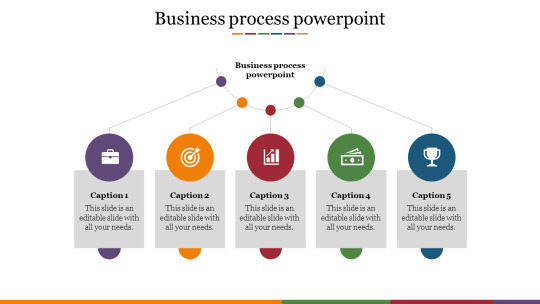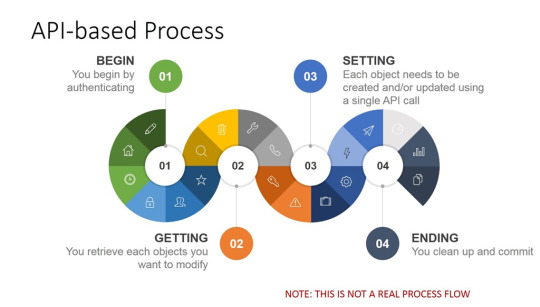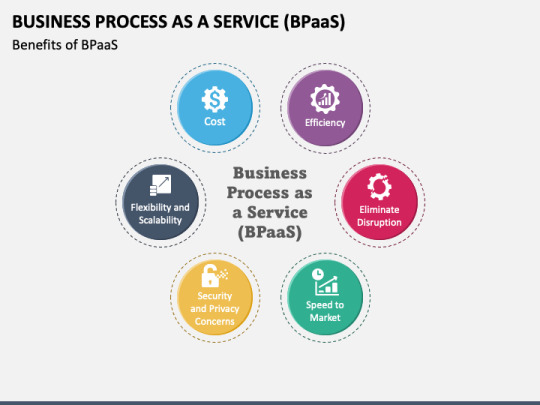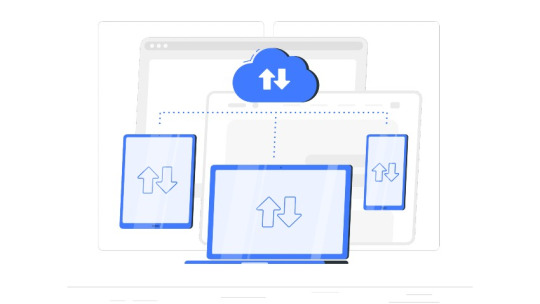Don't wanna be here? Send us removal request.
Text
BPaaS vs Traditional Business Models: Which is Right for You?
In today's fast-paced business environment, organizations are continuously looking for ways to stay competitive, reduce costs, and streamline their operations. Traditional business models, which rely on in-house infrastructure and manual processes, are now facing stiff competition from more innovative models like Business Process as a Service (BPaaS). BPaaS is part of the broader cloud-based service model, offering businesses the ability to outsource specific business functions such as payroll, customer support, and HR services. But how does BPaaS compare to traditional business models? And which one is right for your company?

Understanding BPaaS and Traditional Business Models
Traditional Business Models typically involve the operation of business processes on-premises, where companies rely on their in-house teams and infrastructure. This model often requires large investments in hardware, software, and human resources. Companies with traditional business models typically handle operations like finance, human resources, and supply chain management internally, with little to no external assistance. While this provides control, it can lead to inefficiencies, high operational costs, and limited scalability.
On the other hand, BPaaS is a cloud-based model that outsources business processes to third-party providers who specialize in handling specific tasks. BPaaS providers offer comprehensive solutions for a wide range of business processes, including finance, human resources, customer service, and IT management. BPaaS allows businesses to access best-in-class technology and expertise without the need for heavy capital investment. This model is highly flexible, scalable, and cost-effective, making it an attractive choice for organizations of all sizes.
Benefits of BPaaS
Cost Efficiency One of the biggest advantages of BPaaS is its cost-effectiveness. Traditional business models often require significant upfront investments in infrastructure and human resources, while BPaaS is subscription-based. Businesses only pay for the services they need, which significantly reduces capital expenditure and operational costs. BPaaS providers also handle the maintenance and upgrades, eliminating the need for internal IT teams to focus on non-core activities.
Scalability BPaaS offers flexibility and scalability that traditional models cannot match. As your business grows, you can easily scale up your operations by adding new services or increasing capacity, without the need for additional infrastructure. Traditional business models often struggle with scalability, as expanding operations may require significant investments in new hardware, software, and employees.
Expertise and Innovation BPaaS providers are specialists in their respective fields, offering access to cutting-edge technologies and industry expertise. By outsourcing processes to these providers, businesses can benefit from the latest advancements in automation, artificial intelligence, and data analytics. Traditional business models may lack this level of expertise and innovation, as they rely on internal teams that may not have the same depth of knowledge or resources.
Focus on Core Activities By outsourcing non-core business functions to a BPaaS provider, companies can refocus their internal resources on core activities, such as product development and customer engagement. This allows organizations to enhance their competitive advantage and improve overall efficiency.
Challenges of BPaaS
Data Security and Privacy Since BPaaS involves third-party providers managing sensitive data, businesses must ensure that these providers adhere to strict data security and privacy standards. While BPaaS providers typically offer robust security measures, businesses must carefully vet their partners to avoid potential breaches or compliance issues.
Dependence on External Providers Outsourcing business processes means relying on external providers to maintain the quality and timeliness of service delivery. If a BPaaS provider experiences technical issues or fails to meet expectations, it can affect the entire business operation. This is less of a concern with traditional models, where businesses have greater control over their internal processes.
Which Model is Right for You?
Choosing between BPaaS and traditional business models depends on several factors, including the size of your business, your budget, and your growth objectives.
For Small and Medium-Sized Enterprises (SMEs): BPaaS is an excellent option. It provides access to advanced technology and resources that SMEs might otherwise be unable to afford, all while reducing overhead costs.
For Large Enterprises: Larger organizations may benefit from a hybrid model, where they continue to handle some core operations internally while outsourcing specific business processes through BPaaS. This allows them to maintain control over strategic activities while benefiting from the scalability and cost efficiency of BPaaS.
For Startups: BPaaS is an attractive choice for startups that need to keep costs low while scaling rapidly. Outsourcing non-core functions can help startups focus on innovation and market expansion.
youtube
Conclusion
The decision between BPaaS and traditional business models ultimately depends on your company's specific needs, goals, and resources. BPaaS offers substantial advantages in terms of cost-efficiency, scalability, and access to expertise, making it a strong contender for modern businesses. However, traditional models still have their place, particularly for businesses that require more control over their processes.
SITES WE SUPPORT
Workflow Procurement - Wix
SOCIAL LINKS Facebook Twitter LinkedIn
1 note
·
View note
Text
Integrating Workflow APIs: Best Practices for Seamless Operations
In today’s fast-paced business environment, efficiency and automation are key to maintaining a competitive edge. One of the most powerful ways to optimize operations is by integrating Workflow APIs (Application Programming Interfaces) into your processes. APIs enable different software applications to communicate and exchange data seamlessly, streamlining workflows and eliminating manual tasks. This integration can significantly improve productivity, reduce errors, and accelerate decision-making.

In this blog, we’ll explore the best practices for integrating Workflow APIs to ensure smooth and effective operations across your business.
1. Understand Your Workflow Requirements
Before integrating any Workflow API, it’s crucial to have a clear understanding of your workflow requirements. Identify the key processes that need automation and consider how the API will enhance each one. Whether it’s streamlining document approvals, automating communication between departments, or integrating customer support systems, understanding the scope of your needs ensures that the API solution will fit your business processes perfectly.
2. Choose the Right API Provider
Not all APIs are created equal, and selecting the right provider is vital for success. Choose an API that aligns with your business goals and integrates well with your existing tools and systems. Look for the following key factors when selecting a provider:
Reliability: Choose an API provider with a proven track record of uptime and stability.
Security: Ensure the API provider follows industry best practices for data security and complies with regulations like GDPR.
Scalability: The API should scale as your business grows. Choose a provider that offers flexible plans to accommodate your evolving needs.
Support: Opt for a provider with excellent customer support to help you troubleshoot issues and implement solutions.
3. Ensure Seamless Integration with Existing Systems
For a Workflow API to be effective, it must integrate smoothly with your existing tools and systems. Make sure that the API is compatible with the software you already use, whether it’s your CRM, ERP, HR software, or project management tools. This will ensure a unified system where all your applications work in harmony, reducing the risk of data silos and improving efficiency.
Invest time in testing and setting up the API properly. Ensure data flows between systems without issues, and verify that all user permissions and access controls are properly configured.
4. Focus on Automation and Standardization
One of the primary benefits of integrating Workflow APIs is automation. Look for opportunities to automate repetitive and time-consuming tasks. For example, you can automate approvals, notifications, and report generation. This reduces the likelihood of human error and frees up valuable time for your team to focus on high-priority tasks.
Additionally, work toward standardizing processes across your organization. A standardized workflow ensures consistency and improves efficiency, making it easier to scale your business. APIs can help maintain uniformity across teams and departments by enforcing standardized processes.
5. Monitor and Optimize Workflow Performance
Once your API integration is live, monitoring its performance is crucial. Track how well the API is performing, ensure that workflows are running smoothly, and identify any bottlenecks or areas for improvement. Analytics and reporting features in API platforms can give you insights into workflow performance and help you fine-tune processes.
Don’t hesitate to optimize and tweak workflows as your business evolves. APIs provide the flexibility to adapt to changing needs, so regularly assess their performance and make necessary adjustments to keep things running efficiently.
6. Prioritize Security and Compliance
Security is a major consideration when integrating Workflow APIs, especially when handling sensitive business data. Ensure that the API uses encryption and secure data transmission protocols to protect your information. Additionally, ensure that your API integration complies with relevant industry standards and regulations such as HIPAA, GDPR, and SOC 2.
A secure and compliant API setup will not only protect your business but also build trust with your clients and partners, reinforcing your brand’s reputation for reliability and security.
7. Invest in Training and Support
To maximize the benefits of Workflow API integration, ensure that your team is well-trained in using the new systems. Provide comprehensive training sessions to help employees understand how the API works and how it fits into their daily tasks. Also, ensure that you have a solid support system in place to address any technical issues that arise.
youtube
Conclusion
Integrating Workflow APIs is a game-changer for businesses looking to optimize operations and automate key processes. By following these best practices—understanding your workflow needs, selecting the right API provider, ensuring seamless integration, and focusing on automation and security—you can unlock new levels of efficiency, productivity, and collaboration across your organization.
With the right approach, Workflow API integration can transform your business operations and set you on a path to long-term success.
SITES WE SUPPORT
Workflow Procurement - Wix
SOCIAL LINKS Facebook Twitter LinkedIn
0 notes
Text
Top 5 Procurement Technologies Transforming Business Operations in 2025
As businesses strive for greater efficiency, cost savings, and agility in their operations, procurement technology is playing an increasingly crucial role. With advancements in digital solutions, procurement departments are being empowered to drive innovation, streamline processes, and deliver significant business value. In 2025, procurement technologies are poised to take a transformative leap. Here are the top 5 technologies that will revolutionize business operations.

1. Artificial Intelligence (AI) and Machine Learning (ML)
Artificial Intelligence (AI) and Machine Learning (ML) are two of the most disruptive technologies shaping the future of procurement. By automating routine tasks and analyzing vast amounts of data, AI and ML are improving decision-making and forecasting capabilities. For instance, AI-powered systems can analyze past purchase data, predict future demand, and recommend optimal suppliers based on performance metrics. Additionally, AI chatbots are streamlining communication and providing real-time responses to procurement queries, enabling procurement professionals to focus on more strategic tasks.
2. Cloud-Based Procurement Solutions
Cloud-based procurement solutions have become essential for modern businesses. These platforms enable procurement teams to collaborate seamlessly with internal and external stakeholders across various locations. Cloud-based solutions provide a centralized database, making it easier to track purchases, manage inventory, and ensure compliance with contracts. Additionally, cloud platforms offer real-time analytics, which help organizations make data-driven decisions and gain valuable insights into supplier performance, procurement spend, and market trends. The scalability and flexibility of cloud solutions make them ideal for companies of all sizes looking to future-proof their procurement processes.
3. Blockchain Technology
Blockchain is revolutionizing procurement by offering greater transparency, security, and traceability. In procurement, blockchain helps to authenticate transactions, reduce fraud, and ensure that products and services meet regulatory and compliance standards. By creating a decentralized, immutable ledger, blockchain can track every step of the supply chain, from raw material sourcing to final delivery. This technology can also help streamline supplier payment processes by automating contract execution and ensuring that payments are made in a timely and secure manner. As blockchain adoption grows, businesses will be able to enhance trust and improve relationships with their suppliers.
4. Robotic Process Automation (RPA)
Robotic Process Automation (RPA) is transforming procurement by automating repetitive and manual tasks. RPA bots can handle a variety of procurement functions, such as invoice processing, purchase order creation, and supplier onboarding, reducing human error and operational costs. By automating these tasks, procurement teams can focus on higher-value activities such as strategic sourcing and supplier relationship management. The use of RPA also ensures faster processing times, improved accuracy, and better overall efficiency within the procurement function.
5. Procurement Analytics and Big Data
Procurement analytics and Big Data are providing procurement teams with invaluable insights into supplier performance, procurement trends, and opportunities for cost savings. By analyzing vast amounts of data from various sources, organizations can gain a deeper understanding of their procurement activities and identify areas for improvement. Advanced analytics tools help businesses make informed decisions about supplier selection, negotiate better contract terms, and optimize inventory management. In 2025, procurement analytics will be even more advanced, using predictive analytics to forecast future demand and enable proactive decision-making.
youtube
Conclusion
In 2025, procurement technology will continue to evolve and reshape business operations. AI and ML, cloud-based solutions, blockchain, RPA, and procurement analytics are all playing pivotal roles in driving efficiency, reducing costs, and enhancing supplier relationships. As businesses adopt these technologies, they will not only streamline their procurement processes but also position themselves for long-term growth and success in an increasingly competitive market. By staying ahead of the curve and embracing these innovations, organizations can unlock the full potential of their procurement functions and drive significant business value.
SITES WE SUPPORT
Workflow Procurement - Wix
SOCIAL LINKS Facebook Twitter LinkedIn
0 notes
Text
How BPaaS is Transforming Business Operations in the Digital Age
In today’s rapidly evolving digital landscape, businesses are under increasing pressure to optimize operations, improve efficiency, and remain competitive. One solution that has gained significant traction in recent years is Business Process as a Service (BPaaS). BPaaS refers to the delivery of business process outsourcing (BPO) services through cloud-based platforms, enabling businesses to leverage technology for streamlined operations and reduced costs. This model is transforming how businesses operate, providing them with the tools to meet modern challenges head-on.

What is BPaaS?
BPaaS is a cloud-based service that provides businesses with access to outsourcing services that are managed by third-party providers. These services often include a range of functions such as human resources, finance, supply chain management, and customer support, all handled through the cloud. The core benefit of BPaaS is its ability to integrate business processes seamlessly while offering scalability, flexibility, and enhanced performance.
Driving Operational Efficiency
One of the most significant ways BPaaS is transforming business operations is by driving operational efficiency. By outsourcing non-core business functions to specialized service providers, companies can focus on their core competencies and strategic goals. BPaaS allows businesses to automate processes that were traditionally manual and time-consuming, reducing the risk of human error and freeing up valuable resources. This results in faster decision-making, reduced operational costs, and a more agile business environment.
Cost-Effective Solutions for Small and Medium Enterprises (SMEs)
Traditionally, small and medium-sized enterprises (SMEs) struggled to afford the infrastructure needed to implement robust business process solutions. However, BPaaS has leveled the playing field by offering affordable solutions that scale with a company's needs. With BPaaS, businesses no longer need to invest in expensive hardware, software, or IT staff. Instead, they can subscribe to BPaaS offerings and pay only for the services they need, when they need them, making it an ideal solution for growing businesses with limited resources.
Enhancing Data-Driven Decision Making
In the digital age, data is king, and BPaaS is helping businesses leverage data to make more informed decisions. By centralizing key business processes in the cloud, BPaaS platforms provide real-time access to data across various departments. This data integration enables companies to gain valuable insights into performance metrics, customer behavior, and market trends. With this information at their fingertips, businesses can make more strategic decisions, optimize resource allocation, and enhance overall productivity.
Improved Collaboration and Communication
Effective collaboration and communication are essential to the success of any organization. BPaaS fosters collaboration by providing a centralized platform for teams to interact, share information, and work on tasks simultaneously, regardless of their location. This is particularly beneficial for businesses with remote or distributed teams. The cloud-based nature of BPaaS allows for seamless communication, leading to enhanced teamwork, quicker problem-solving, and improved customer service.
Scalability and Flexibility for Growth
Another significant advantage of BPaaS is its scalability. As businesses grow, their operational needs evolve, and BPaaS provides the flexibility to scale up or down as required. BPaaS platforms are designed to grow with your business, allowing for the addition of new users, services, and functionalities without the need for significant infrastructure changes. This scalability ensures that businesses can adapt quickly to changing market conditions, customer demands, and emerging trends.
Enhancing Customer Experience
In the digital age, providing an exceptional customer experience is crucial to retaining clients and building a strong brand. BPaaS platforms allow businesses to improve customer service by streamlining communication and delivering personalized experiences. With BPaaS, companies can offer faster response times, track customer interactions, and provide consistent service across multiple touchpoints, leading to higher customer satisfaction and loyalty.
youtube
Conclusion
BPaaS is undoubtedly revolutionizing the way businesses operate in the digital age. By offering cloud-based, scalable, and cost-effective solutions, BPaaS enables companies to optimize their operations, enhance collaboration, and make data-driven decisions. The ability to automate processes, reduce costs, and scale efficiently makes BPaaS an invaluable tool for businesses looking to stay competitive in a fast-paced market. As more businesses embrace this model, the potential for transformation in the way companies approach business processes is limitless.
SITES WE SUPPORT
Workflow Procurement - Wix
SOCIAL LINKS Facebook Twitter LinkedIn
0 notes
Text
How Workflow APIs are Transforming Business Automation
In today’s fast-paced digital era, businesses are under constant pressure to streamline operations, enhance productivity, and stay competitive. Workflow APIs (Application Programming Interfaces) have emerged as game-changing tools in the realm of business automation, enabling organizations to integrate, automate, and optimize their processes seamlessly.

This blog delves into how Workflow APIs are revolutionizing business automation, highlighting their benefits, use cases, and the future they promise.
What Are Workflow APIs?
Workflow APIs are interfaces that allow different software systems to communicate and work together to automate workflows. By bridging disparate systems, Workflow APIs enable businesses to create streamlined, efficient processes without manual intervention.
These APIs provide the flexibility to customize workflows, connect tools, and automate repetitive tasks, making them an integral component of modern business automation strategies.
Key Benefits of Workflow APIs
1. Enhanced Integration Across Platforms
Workflow APIs facilitate seamless integration between various software platforms, such as CRM, ERP, and HR systems. This eliminates silos, ensuring data flows smoothly across departments, leading to better collaboration and informed decision-making.
2. Time and Cost Efficiency
Manual processes can be time-consuming and error-prone. Workflow APIs automate repetitive tasks, reducing the workload on employees and minimizing human errors. This translates to significant time and cost savings for businesses.
3. Scalability and Flexibility
As businesses grow, their workflows become more complex. Workflow APIs provide the scalability and flexibility needed to adapt to evolving business needs, ensuring that automation strategies remain effective as the organization expands.
4. Improved Customer Experience
By automating processes like order tracking, customer support, and feedback collection, Workflow APIs enhance the overall customer experience. Faster response times and personalized interactions lead to higher customer satisfaction.
5. Data-Driven Decision Making
Workflow APIs enable real-time data exchange and reporting, providing actionable insights. Businesses can leverage this data to optimize operations and make strategic decisions.
Use Cases of Workflow APIs
1. HR and Recruitment
Workflow APIs can automate onboarding processes, ensuring new hires are seamlessly integrated into the company. They can also connect applicant tracking systems with HR software to streamline recruitment.
2. Finance and Accounting
From invoice processing to expense approvals, Workflow APIs automate financial workflows, ensuring compliance and accuracy. Integration with accounting software simplifies financial reporting and analysis.
3. Marketing Automation
Workflow APIs connect marketing tools like email automation platforms, CRM, and analytics tools, enabling personalized campaigns and efficient lead nurturing.
4. E-Commerce Operations
In the e-commerce industry, Workflow APIs automate order processing, inventory management, and logistics, ensuring smooth operations and timely deliveries.
5. IT Service Management
Workflow APIs streamline IT processes, such as ticketing and incident management, by integrating helpdesk software with other IT tools, improving response times and efficiency.
The Future of Workflow APIs in Business Automation
As technology continues to evolve, the potential of Workflow APIs in business automation is limitless. Here are some trends to watch:
AI and Machine Learning Integration: Workflow APIs will increasingly incorporate AI to enable predictive automation and smarter decision-making.
IoT and Workflow Automation: Integration with IoT devices will enable businesses to automate workflows based on real-time data from connected devices.
Low-Code/No-Code Platforms: Workflow APIs will become more accessible through low-code and no-code platforms, empowering non-technical users to build and automate workflows.
Blockchain in Workflow Automation: Blockchain technology will enhance transparency and security in automated workflows, particularly in industries like supply chain and finance.
youtube
Conclusion
Workflow APIs are revolutionizing business automation by providing the tools to integrate, automate, and optimize processes across various domains. Their ability to reduce costs, enhance efficiency, and improve customer experiences makes them indispensable in today’s competitive business landscape.
By leveraging Workflow APIs, businesses can future-proof their operations, embrace innovation, and achieve unparalleled efficiency. As this technology continues to evolve, the possibilities for business automation are endless.
SITES WE SUPPORT
Workflow Procurement - Wix
SOCIAL LINKS Facebook Twitter LinkedIn
1 note
·
View note